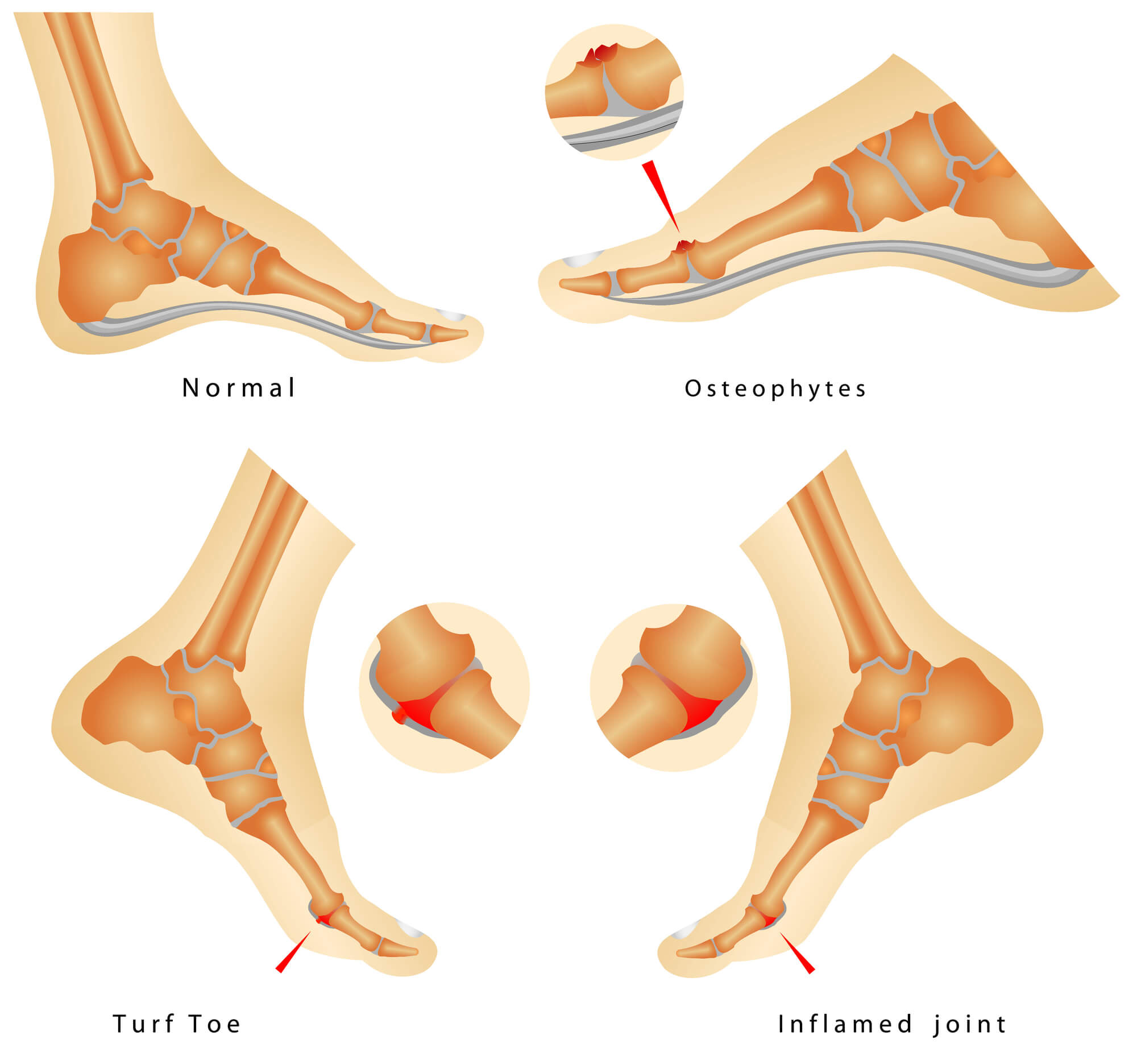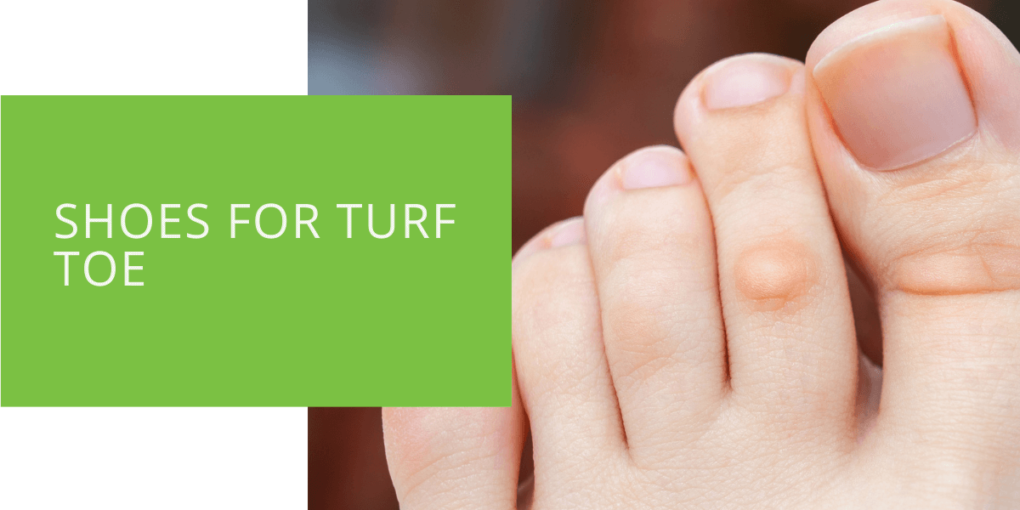Shoes for Turf Toe
Turf toe, often misunderstood as a minor injury, can significantly impact daily activities and athletic performance. While individuals may be familiar with its symptoms and diagnosis, the role of footwear in managing turf toe is often overlooked. This guide delves into the importance of proper footwear choices for turf toe relief, exploring key features, recommended shoe types, and prevention tips.
Key Takeaways
- Proper footwear selection is crucial for managing turf toe, with features like firm sole construction, spacious toe box, and cushioning being essential.
- Individuals with turf toe should consider athletic shoes with reinforced toe protection, orthopedic options for customized support, and minimalist shoes for natural foot movement.
- Gradual transition to new footwear, regular maintenance, and orthotic inserts can help prevent turf toe and promote overall foot health.
Understanding Turf Toe and Its Impact on Footwear Choices
Turf toe is essentially a sprain of the ligaments surrounding the big toe joint, typically caused by hyperextension or excessive big toe bending. This injury is common among athletes who engage in abrupt stops or changes in direction, such as football, soccer, and basketball.
The Importance of Proper Footwear for Managing Turf Toe
Choosing the right shoes is crucial for individuals with turf toe, as inadequate footwear can exacerbate symptoms and prolong recovery time. Proper footwear provides support and stability to the injured area and helps prevent further injury by reducing pressure and friction on the affected joint.
Key Considerations When Choosing Shoes for Turf Toe
When selecting shoes for turf toe relief, several factors should be taken into account:
- Firm and Supportive Sole Construction: Shoes with a firm and supportive sole can help stabilize the foot and prevent excessive big toe bending.
- Toe Box Width and Depth: Opt for shoes with a spacious toe box to accommodate swelling and allow for adequate toe movement without causing discomfort.
- Cushioning and Shock Absorption: Adequate cushioning in the sole can help reduce impact and relieve pain associated with turf toe.
- Arch Support and Stability Features: Shoes with proper arch support can help distribute weight evenly and alleviate pressure on the forefoot.
- Flexibility in the Forefoot Region: While stability is important, shoes should also allow for natural forefoot movement to prevent restriction and discomfort.
Features to Look for in Turf Toe-Friendly Shoes
Firm and Supportive Sole Construction
Shoes with a firm and supportive sole are essential for individuals with turf toe, as they provide stability and prevent excessive bending of the big toe joint. Look for shoes with a reinforced midsole with sufficient rigidity to support the foot during activities.
Toe Box Width and Depth for Adequate Toe Movement
The toe box is the front part of the shoe that houses the toes. For individuals with turf toe, choosing shoes with a spacious toe box is important to allow for adequate toe movement without causing discomfort or pressure on the affected joint. Look for shoes with a wide and deep toe box that allows the toes to splay naturally.
Cushioning and Shock Absorption to Reduce Impact
Shoes with adequate cushioning in the sole can help reduce each step's impact and relieve the pain associated with turf toe. Look for shoes with responsive cushioning materials such as EVA foam or gel inserts that absorb shock and provide a comfortable ride.
Arch Support and Stability Features
Proper arch support is crucial for individuals with turf toe, as it helps distribute weight evenly and alleviate pressure on the forefoot. Look for shoes with built-in arch support or removable insoles that accommodate custom orthotic inserts for personalized support.
Flexibility in the Forefoot Region
While stability is important, shoes should allow natural forefoot movement to prevent restriction and discomfort. Look for shoes with a flexible forefoot region that allows the toes to bend and flex naturally during activities.

Types of Shoes Recommended for Turf Toe Relief
Athletic Shoes with Reinforced Toe Protection
Athletic shoes designed specifically for football, soccer, and basketball often feature reinforced toe protection to prevent injuries such as turf toe. Look for shoes with a durable upper material and a reinforced toe cap for protection.
Orthopedic Shoes and Inserts for Customized Support
Orthopedic shoes and inserts can provide customized support for individuals with turf toe, helping to alleviate pain and discomfort. Consider consulting with a podiatrist or orthopedic specialist to determine the best orthotic options.
Minimalist Shoes for Natural Foot Movement
Minimalist shoes with a low-profile design and flexible sole can promote natural foot movement and help strengthen the muscles and ligaments surrounding the big toe joint. However, if unsure, individuals with turf toe should proceed cautiously when transitioning to minimalist footwear and consult with a healthcare professional.
Specialty Turf Toe Shoes: What Sets Them Apart?
Some brands offer specialty turf toe shoes for individuals with this condition. These shoes often feature additional cushioning and support in the forefoot region, as well as a wider toe box and reinforced toe protection. While these shoes may come at a higher price point, they can significantly relieve those struggling with turf toe symptoms.
Tips for Preventing Turf Toe Through Footwear Choices
Proper Sizing and Fit: Ensuring Comfort and Support
Choosing the right shoe size and ensuring a proper fit is essential for preventing turf toe and other foot injuries. Ensure ample space in the toe box for toe movement and that the shoe provides adequate support and stability for your foot type.
Gradual Transition to New Footwear to Avoid Injury
When transitioning to new footwear, especially if switching to minimalist shoes or specialty turf-toe shoes, it's important to do so gradually to avoid injury. Start by wearing the new shoes for short periods and gradually increase the duration as your feet adjust.
Regular Inspection and Maintenance of Shoe Condition
Inspect your shoes regularly for signs of wear and tear and replace them as needed to ensure optimal support and cushioning. Pay attention to the condition of the sole, insole, and upper material, and replace any worn-out components promptly.
Utilizing Orthotic Inserts for Added Support
Custom orthotic inserts can provide additional support and stability for individuals with specific foot conditions, such as flat feet or high arches. Consult with a podiatrist or orthopedic specialist to determine the best orthotic options.
Conclusion
Proper footwear is crucial in managing turf toe and preventing further injury. Individuals can alleviate discomfort and promote healing by choosing shoes with appropriate features such as firm sole construction, spacious toe box, cushioning, and arch support. Whether you're an athlete looking for turf toe-friendly athletic shoes or an individual seeking everyday footwear options, our team at ePodiatrists is here to help. Schedule an appointment today to discuss your footwear needs and receive expert advice tailored to your condition. Your foot health is our priority.

